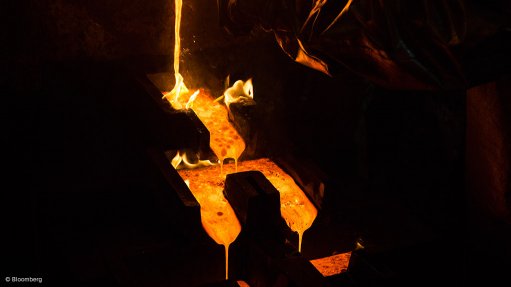
Photo by: Bloomberg
JOHANNESBURG (miningweekly.com) – Gold mining and mineral exploration company Lydian International on Thursday said there was potential for further project upgrades through a value-engineering programme at its 100% owned Amulsar gold project, in Armenia.
The second quarter engineering programmes focused on testing and the analysis of a number of opportunities to improve Amulsar economics.
Lydian president and CEO Howard Stevenson noted that the TSX-listed company was pleased with the progress to date and added that the programme was an important step toward ensuring maximum project economics.
“Much of this work will also support enhanced construction and operating conditions and further mitigate environmental and social impacts. We expect to bring these value-engineering studies to conclusion in due course and quantify our findings through an update of the Amulsar technical report,” he advised.
Consideration was mostly given to opportunities to reduce capital costs and identify other areas where operating cost improvements could also be achieved.
This included incorporating new Armenian mining legislation to redesign the mine through reconfiguring the crushing plant, conveyor belt design revisions and refinements to the site layout.
The possibility of moving from self-mining to contract mining was also under review.
In May, Lydian reported that an expected saving of about $86-million would result from an optimised mine design, which took into account legislative changes in Armenia which now allowed for a maximum ramp gradient of 10% in openpit mines.
Fuel cost assumptions were also updated to take into account the current trend for diesel prices in Armenia. These changes provided a significant reduction in expected operating costs of about $83-million and a reduction in expected mining capital expenditure of about $3-million.
The potential to redesign the crushing and screening plant was singled out as a significant opportunity to further reduce capital and operating costs.
Metallurgical testing was being conducted on 30 columns to determine the effect on gold recoveries and other operating parameters, such as reagent consumption, when increasing the crush size from a P100 crush size of 12.5 mm to 19 mm.
If successful, a larger crush size combined with the findings of a blast fragmentation study may support reconfiguration and reduction of crushing equipment. Further, the energy requirement for crushing may be reduced if the use of a larger crush size was possible.
An alternative route and configuration of the conveyor belt was also under review, as a more direct route could result in a 15% reduction in the overland conveyor length, fewer elevated sections and the elimination of the transfer station.
Analysis of the operating belt speed was also being examined, which could allow for the reduction of the belt width.
Other site layout revisions were being considered to reduce construction earthwork volumes, improve surface-water management and combine various facilities to reduce duplicated infrastructure.